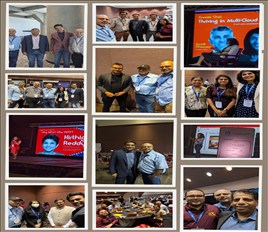Conferences are usually avenues for networking but during the pandemic most events went virtual and we started to miss the camraderie. As the world is opening up, slowly in-person events are making a comeback and ASEI Silicon Valley chapter had an opportunity to partner with the IIT Bay area alumni association on Aug 27th for a full day of learning and networking.
What value did it offer? Well, if you combine learning cutting- edge topics along with meeting industry colleagues and reconnecting with college alumni networks all in one, then that event becomes exponentially valuable.
The IIT Bay Area team did a fantastic job putting together an event taglined “Reshaping the World” that brought together over 50 speakers – some of them very well known names in the industry. At the event, the ASEI Board was represented by Piyush Malik, Surbhi Kaul and Student member Nidhi Mathihali. Along with Surbhi hosting a fireside chat, we also got to hear from past ASEI Awardees : Unicorn creator & entrepreneur of the year 2020 Jyoti Bansal and Intrapreneur of the Year 2021 Google TV GM & VP Shalini Govil Pai.
Read the insider scoop and key takeaways in this candid blog by ASEI President Piyush Malik











